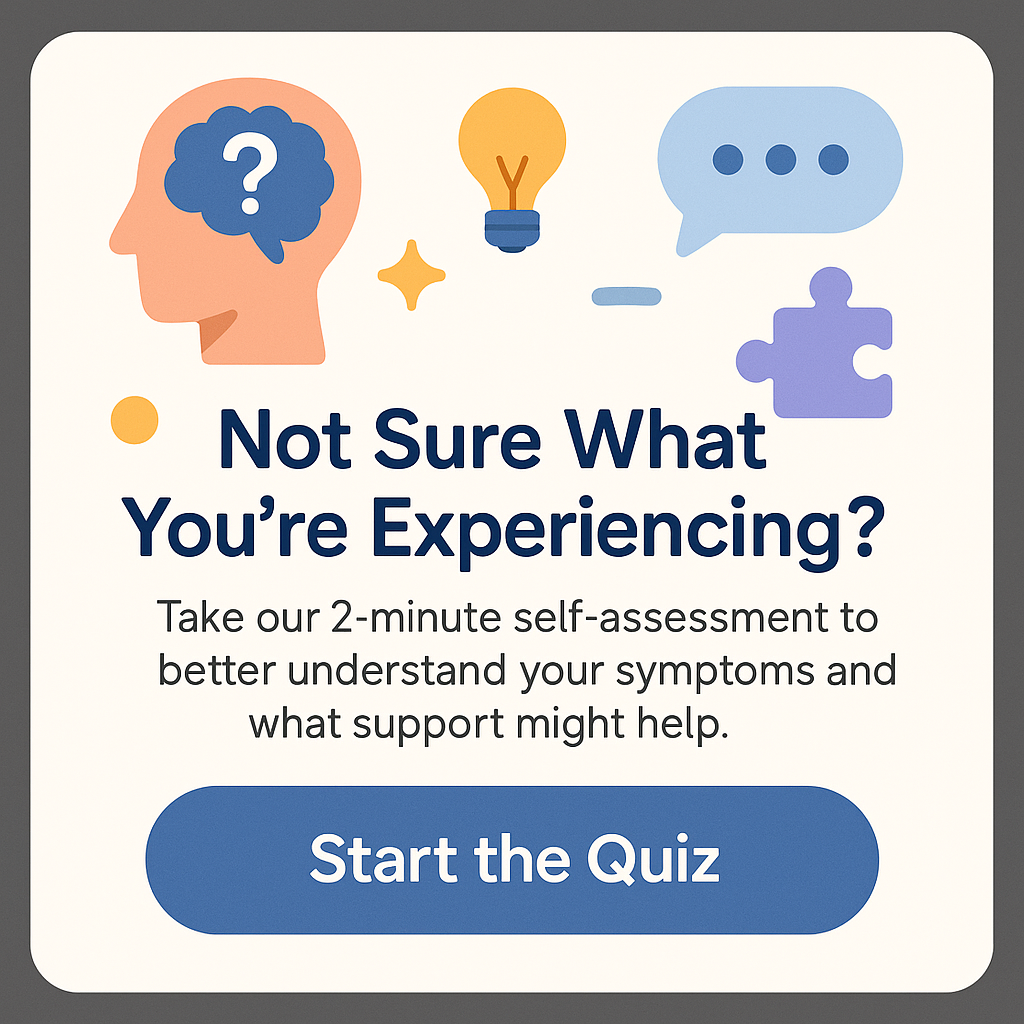What Conditions are ABA Therapy For?
Discover what conditions are ABA therapy for, and how this effective method can help those with Autism Spectrum Disorder and more. Read on!
Applied Behavior Analysis (ABA) therapy has revolutionized the way we understand and approach diverse learning and behavioral challenges. Originally developed to meet the needs of individuals with Autism Spectrum Disorder (ASD), ABA therapy has evolved into a vital tool for addressing various conditions. It’s not just for children on the autism spectrum; it can help various individuals develop everyday functional skills, improve social interactions, and reduce problematic behaviors.
ABA therapy employs principles from the science of behavior to encourage positive changes through structured interventions. The question many parents, educators, and caregivers often ask is, “What conditions are ABA therapy for?” In the following sections, we will explore its application across several challenges, not limited to but including ASD, developmental disorders, Down syndrome, ADHD, and more.
Understanding ABA Therapy: A Brief Overview
Before diving into the specifics of what conditions ABA therapy is used for, let’s take a moment to understand the technique itself. ABA therapy is based on the principles of behaviorism, a field that studies the interactions between behaviors and the environment. The primary aim is to improve specific behaviors while developing skills that enhance the individual’s quality of life.
At its core, ABA focuses on behavior modification through reinforcement. Positive behaviors are reinforced while negative behaviors are discouraged. This method is incredibly adaptable, allowing therapists to customize the approach based on the individual’s specific needs and circumstances.
Isn’t it fascinating that ABA can be tailored to such a degree? Think of it as a personal training program – it’s not one-size-fits-all. Every person is different; their needs, motivations, and responses can vary widely. By focusing on individual goals and behaviors, ABA builds a path for learning and development in a structured manner.
Now, let’s delve deeper into the conditions commonly treated with ABA therapy.
ABA Therapy and Autism Spectrum Disorder (ASD)
ABA therapy is perhaps best known for its application in treating Autism Spectrum Disorder (ASD). Hence, one could say that a primary focus of ABA therapy is to support individuals on the spectrum. According to the CDC, about 1 in 54 children have been diagnosed with ASD, making it crucial to develop effective intervention strategies.
Individuals with ASD may exhibit a range of behaviors including difficulties with social interaction, communication challenges, and restrictive or repetitive patterns of behavior. These features can affect various aspects of life, from education to daily living skills. Here’s where ABA therapy shines, crafting personalized programs targeting behavioral challenges and skill deficits.
Research has shown that ABA can lead to significant improvements in several domains for those with ASD. For example, programs focusing on social skills can help individuals interact more favorably with peers, thus enriching their overall social experiences.
Moreover, ABA therapy can assist in enhancing communication skills, promoting independence in daily activities, and reducing unwanted behaviors, such as tantrums or self-injury. The data reflects that early intervention yields the best results. The earlier a child begins ABA therapy, the more progress they often make in acquiring crucial skills.
ABA therapy is not just a treatment; it is a lifestyle change that aims to equip individuals with the abilities needed to navigate everyday challenges more effectively. But ASD isn’t the only condition where ABA therapy proves beneficial; let’s look at some other conditions it addresses.
Other Conditions Benefiting from ABA Therapy
Aside from Autism Spectrum Disorder, several other conditions are linked with or exacerbate developmental, behavioral, or learning challenges. Here’s a closer look at a few of these conditions and how ABA can play a transformative role.
ABA Therapy for Developmental Disorders
Developmental disorders encompass a broad range of issues, including but not limited to language and speech delays, motor skills deficits, and cognitive challenges. Though the specifics may vary, many developmental disorders can share similarities with ASD, which makes ABA therapy a viable option.
For example, children with developmental delays in language acquisition can benefit from individualized ABA programs that use reinforcement to encourage speech. Therapists may develop structured play activities aimed at promoting language, thereby turning an otherwise challenging situation into a joy-filled learning experience.
Similarly, children facing motor skill deficits may engage in activities that enhance fine and gross motor abilities through targeted practice. The structured nature of ABA allows for consistency and continued reinforcement, which can dramatically improve the child’s progress over time.
Today’s world recognizes that developmental disorders do not define a child. With the right intervention strategies, children can thrive academically, socially, and emotionally. ABA therapy not only empowers children to overcome combating behaviors but also fosters a sense of accomplishment that reverberates positively across multiple facets of their lives.
ABA Therapy for Attention-Deficit/Hyperactivity Disorder (ADHD)
Attention-Deficit/Hyperactivity Disorder (ADHD) presents challenges involving inattention, hyperactivity, and impulsivity. While ABA therapy was originally designed with autism in mind, it has proven effective for children with ADHD. Implementing structured interventions can help children learn how to focus their attention, follow instructions, and engage in self-regulation.
Parents and educators often wonder how ABA strategies can adapt to assist those with ADHD. One approach is utilizing behavior reinforcement to encourage on-task behavior. For example, therapists might develop reward systems, where children receive incentives for completing assignments or paying attention during discussions. The aim is to shift impulsive responses towards more thoughtful decision-making.
Additionally, the visualization of tasks through clear expectations and scheduled routines can assist children with ADHD in managing their day-to-day activities proficiently. The organizational skills imparted through ABA therapy significantly contribute to reducing frustration and improving the overall quality of life not only for the children but also for their families.
Supporting Individuals with Down Syndrome through ABA Therapy
Individuals with Down syndrome present unique challenges and strengths that everyday settings might not always optimize. ABA therapy offers a versatile approach to meeting those needs. Particularly, ABA methods focus on fostering skills, independence, and proper behavior management.
Children with Down syndrome often experience a varying degree of speech delays and challenges. Incorporating speech and language components into their ABA programs can foster impressive communication skills. The reinforcement of positive communication attempts encourages real progress.
Moreover, ABA can be beneficial in addressing challenging behaviors that some children exhibit, including tantruming or aggression. By identifying triggers and teaching adaptive replacement behaviors, therapists can equip families with strategies to navigate these ongoing situations positively.
Fostering independence is another key focus. Implementing life skills training, such as personal care routines and social interaction skills, ensures that individuals with Down syndrome have the tools necessary for an enriched life experience.
The Role of Parents and Caregivers in ABA Therapy
A critical facet of ABA therapy lies not only in the interactions between therapists and children but also in the involvement of parents and caregivers. Their engagement is paramount in promoting lasting success and acquiring the skills taught in therapeutic sessions.
For parents, understanding what conditions are ABA therapy for opens the door to supporting their child’s learning journey. Engaging in meaningful conversations with therapists enables parents to align objectives and reinforce lessons learned during therapy at home. This holistic approach strengthens the effects of therapy, enhancing the overall effectiveness.
Moreover, caregivers also benefit from understanding ABA principles, allowing them to become advocates for their child. Educating friends, family, and school personnel about how to support their child’s needs leads to a more favorable educational and developmental experience.
Conclusion
In summary, ABA therapy transcends its initial conception as a treatment for Autism Spectrum Disorder. Its applications extend to various conditions, including developmental disorders, ADHD, and Down syndrome, among others. The structured approach employed in ABA therapy cultivates skill acquisition, behavior modification, and enhanced life experiences. From communication to daily living skills and even managing emotional challenges, ABA has proven to be a versatile and effective solution.
What’s most essential is that parents and professionals appreciate the importance of early intervention, customization, and active participation in their child’s journey. Ultimately, understanding what conditions ABA therapy is for empowers individuals and families alike in achieving meaningful, impactful change. So, whether you’re a parent exploring options for your child, a professional seeking insights, or someone simply curious about behavioral therapies, remember that ABA therapy can open doors to a brighter tomorrow.
FAQs
1. Is ABA therapy only for children with Autism Spectrum Disorder?
No, ABA therapy is effective for a variety of conditions including developmental disorders, ADHD, and Down syndrome, among others.
2. How long does ABA therapy usually take?
The duration of ABA therapy varies greatly depending on individual needs but can range from several months to a few years. Regular assessments help monitor progress and adjust therapy accordingly.
3. Can parents participate in ABA therapy sessions?
Absolutely! Parental involvement is encouraged, as it enhances the therapy’s effectiveness and allows parents to effectively support their child’s learning at home.
4. What is the role of positive reinforcement in ABA therapy?
Positive reinforcement in ABA therapy strengthens desirable behaviors by providing rewards or praise when goals are met, encouraging the continuation of those behaviors.
5. Can ABA therapy be customized?
Yes! ABA therapy is highly customizable, designed to meet the specific needs of the individual, based on their unique challenges and goals.
How to do aba therapy at home?
How to Get Autism Diagnosis Ontario Adults – A Comprehensive Guide







